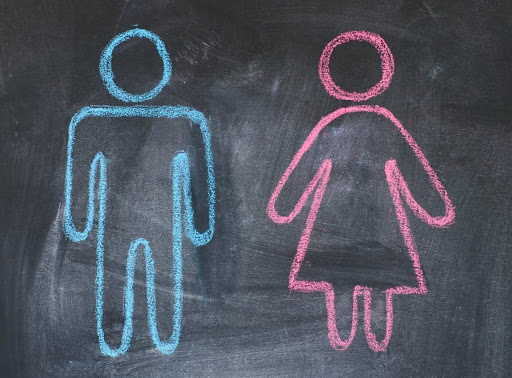Is one gender favored over another at Bellarmine?

Courtesy of Imagentle/Shutterstock
Men and women represented using gender normative colors.

(Courtesy of Imagentle/Shutterstock)
High school is difficult for everyone, but boys have challenges others may never have to think about. School sports are a stressor in general, but it is arguably more difficult to make the men’s sports teams. With more boys playing sports, Bellarmine has added more junior varsity and C teams for sports, but nonetheless cuts for some teams still have to be made, which is something many of the women’s sports do not encounter.
Another major obstacle men face at Bellarmine, and society in general, are strong stigmas and stereotypes. Men are constantly being forced from sharing their emotions in fear of appearing weak, supposed to only play sports, rather than have interests in the arts, and in general asked to fit a specific box that many do not fall into.
When asked about the difficulty of being a man at Bellarmine, junior David Bidus said, “For me it sometimes is hard to keep up with everyone else, sort of like trying to fit in. We’re pressured to look and dress certain ways. It kind of gets tiring.”
A person who identifies as a woman in the real world is already being challenged every day, and Bellarmine is no exception to that. Due to decades of building an incredulously gender-based social hierarchy, it has become normal for many schools (including Bellarmine) to have inherently sexist policies and values.
One example of this is the dress code. No one can deny that a dress code would already be predisposed to be sexist. Certain things deemed “inappropriate” or, as it is often heard, “distracting,” mostly affects the women in the study body. The dress code is partially a direct result of the centuries that the world has been over-sexualizing women and young girls, as well as victim blaming in those cases.
Another issue that cisgendered women face at Bellarmine (and most places of work) are the stigmas around periods. The topic of periods can be awkward, but it’s very taboo in general because of the environment at school. Free health products becoming available in the women’s restroom was a huge step in the right direction for Bellarmine, because it is important that the needs of cisgendered women as well as transgender men at Bellarmine are also catered to. It also seems as though the men’s sports are prioritized more, although that is the environment created entirely by the students? The student body is not consistent with who they support, and anyone could find that the turnout for men’s sporting events significantly outweighs the girls, unless students are bribed with excused absences- then they show up?
One area Bellarmine falls flat in terms of inclusivity is providing for non-binary and gender-fluid students. There are no gender-fluid restrooms on campus for students to use, and little representation at school for these students. Just because there is not a large population of students who choose not to identify as a man or a woman doesn’t mean they are not there, and deserving of the same treatment as anyone else in the school. Bellarmine proposes that they want to treat all of their students equally with equal opportunity, but the actions taken by the administration to extend these opportunities to gender-fluid and non-binary students does not show that value.
Gender expression is something that people are starting to understand more nowadays, and starting to see what it really is, a social construct. Gender is not a biological or scientific term- it is a way people choose to express their identity, through the expectations and stereotypes of what’s assigned to a specific gender. Our gender identity should not determine one’s value in the workplace or school, or allow for unequal opportunities and prejudice policies. Bellarmine is working towards a more progressive curriculum in which they approach gender in a manner that creates a safe environment for all students.
When asked about how her gender identity might impact her experience at Bellarmine, sophomore Josie Jaback said, “I feel like there are an equal amount of opportunities for me as there would be for boys. I think Bellarmine does a good job with not favoring one gender over another. I don’t think my gender puts me at a disadvantage at this school.”
Work will always need to be done, and hopefully many more steps will be taken to ensure this in the near future. And with Jaback’s shining opinion on the current state of Bellarmine, it looks like our school is headed in the right direction.

Maren Jones is a senior who is eager to be a part of the Journalism staff. At Bellarmine she is involved in Link Crew, Diversity Club, Key Club, and the...

Taraneh Moeini is a senior and is extremely excited to be on The Lion staff this year. She has two shih tzus that she loves more than anything...
